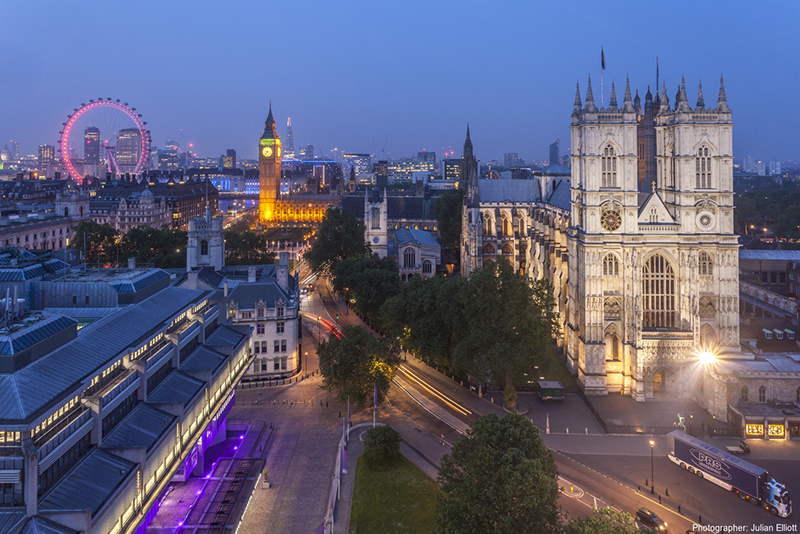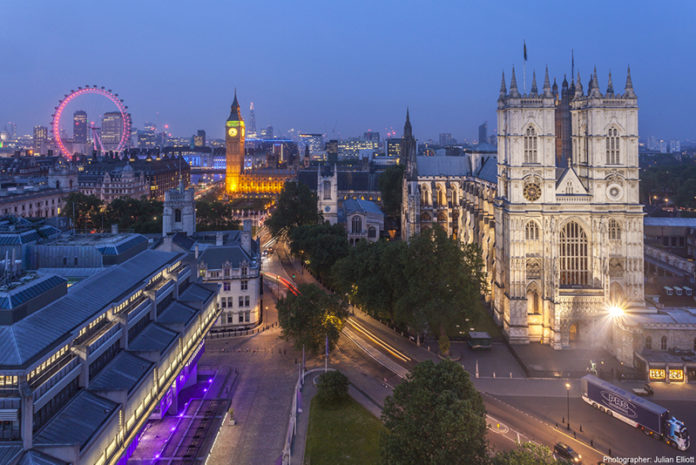From royal parks and palaces, to clothing and consumables fit for a king, this district forms the very heart of London

Part of historic London’s charm lies in its diversity. Each district seems to have its own character, often differing from its neighbour in the space of a street. Unlike Paris or New York, most of it wasn’t really planned, it just happened. The reason? Much of the capital was developed on the whims of royals and canny aristocrats. While Elizabeth I banned building outside the medieval city walls in the 16th century, James I sold licences for illegal projects to court pals in the 17th century. He “found our suburbs of London of sticks and left them of bricke,” he proudly wrote.
Farms, strawberry fields and onion patches began to disappear as fashionable folk demanded second homes. Somewhere they could smell fresh country air rather than the miasma of the city, but not be too far from business or Court life. Even in the 18th century George III would carve Rus in Urbe – the country in the town – on the side of his retreat Buckingham House, later Queen Victoria’s palace with its views of St James’s Park.
London’s rapid growth beyond the city
By 1660 the capital was exploding beyond the city walls into a series of small villages. What the diarist John Evelyn called “little towns” sprung up around an elegant square.
St James’s, south of Piccadilly is just such a delightful 17th-century backwater, rarely explored by visitors. At the bottom of the eponymous street is Henry VIII’s and Anne Boleyn’s walled palace, built in 1532 on the site of a leper hospital, but it was Charles II who transformed the surroundings. In 1698 it became his official royal residence and even today a foreign ambassador is still called Ambassador to the Court of St James. The palace was home to several aristocrats and the public is only admitted to the Chapel Royal, where Charles I took communion before his execution, for winter Sunday services.
King Charles II influence of St James
Once Charles II – not called The Merry Monarch for nothing – moved in, St James’s was the place to be. He moved his mistresses nearby, played palla a maglio (a cross between croquet and bowls) on what became Pall Mall and opened a public park where he lost one of his spaniels “about the bigness of a tumbler”. He also allowed Henry Jermyn, Earl of St Albans to build St James’s Square to the east of the palace, where aristocrats would pay for the surrounding grand houses. Inadequate funding meant scaling down the project, but six dukes, seven earls, a countess, a baron and a baronet all agreed that you could live fashionably in a shoebox.
Fashionable living
The coming of the beau monde meant servants’ quarters, mews, shops and pubs. Jermyn Street, which is where the fashionable London man has dressed for three centuries, getting his shirts from Turnbull and Asser, and family-owned Harvie & Hudson, aftershave from Floris, suits from Hackett and shoes from Tricker’s, which has been hand-making footwear since 1829. Fine British cheeses would be bought from Paxton and Whitfield – they opened in 1797 – and teas from nearby Fortnum and Mason. This food emporium celebrated its tercentenary in 2008 and underwent a complete refurbishment. Take time for tea in the Fountain Restaurant and outside look up at the famous clock – added in 1964 – where four-foot-high figures of Mr Fortnum and Mr Mason make their appearance on the hour.
Duke Street is popular, with its art and antique galleries and tiny unspoilt Chequers Tavern where coachmen from nearby mews gathered in the 18th century. Just round the corner is Christie’s auction rooms and, in Ryder Street, my ex-GP Chris Beetles’ English watercolour and illustrations gallery.
London’s oldest village inn
There are some atmospheric little alleyways round here. Crown Passage, with is tiny cafes and the Red Lion, “London’s oldest village inn”. Round the corner on Pall Mall, I found Farlows which has been here since 2003 but with a history that goes back much farther. Charles Farlow opened his first shop on the Strand in 1840 and those seeking the finest countrywear and shooting accessories have been visiting ever since.
Neighbouring St James’s Street is home to splendid shops like John Lobb, Prince Charles’s bootmaker. Wooden shaped feet with the customer’s name and number are kept ready for their next order.
Along here, too, is Backes and Strauss, London watchmakers founded in 1789 and – for those with magpie tendencies – the oldest diamond company in the world. Royal hatters James Lock and Co, from 1676, are also here and still family owned. “Admiral Lord Nelson wore our bicorn at the Battle of Trafalgar,” revealed a spokeswoman. Customers include everyone from foreign ambassadors to fashionable women, and Princess Diana, whose former home Spencer House is a short walk away, would undoubtedly have popped in.
Beau Brummell
Strolling up St James’s Street – famous for its 18th-century men’s clubs – I found myself back in Jermyn Street, standing in front of Beau Brummell’s bronze statue. He taught the Prince of Wales, later George IV to dress well. On the plinth it says, “To be truly elegant, one should not be noticed.”
Brummell lived in Mayfair, another of London’s beautiful villages, a step from Jermyn Street across Piccadilly. Probably named after the 16th-century makers or sellers of “pickadill”, a pointed border on a garment, that street is famous today for St James’s Church, designed by Sir Christopher Wren, Burlington House – home of the Royal Academy of Arts – Fortnum and Mason and the Ritz Hotel.
Mayfair was not all it seemed
In the 1760s Horace Walpole, who’d remembered the area north of Piccadilly as rustic and full of stables remarked, “as if all the grooms that used to live there had got estates and built palaces.” But despite the grand houses, Mayfair wasn’t all it seemed. Behind the posh houses were poor backstreets, “whose tenants wait on the upper crust” wrote a contemporary.
How was Mayfair named?
The “village” got its name from the 15-day fair held here in May from the 1680s until 1764 when an aristocratic local complained about the noise and riffraff’s “drunkenness, gaming and lewdness”. The site of the old fair in the south-west corner of the area was developed by builder Ernest Shepherd and in the 1960s still had a very louche reputation. Ivor Edwards, who’s owned The Barber Shop in Shepherd Market for 40 years, recalls “a huge mix of people in the evenings. Everyone from racing drivers and actors to elderly gangsters and ‘ladies of the night’.” Sadly, Tiddy Doll’s, a restaurant named after the 18th-century gingerbread seller immortalised by Hogarth has closed.
Just across the road from Shepherd Market in Curzon Street I found Geo F Trumper, the Royal barber, “the ultimate grooming experience for gentlemen.” Manager Michael Mason has been there for 25 years and was delighted to show me, “all kinds of things for a gentlemen’s toilette.” Everything from badger shaving brushes to sandlewood scents.
All the streets contain architectural gems and not far away is my favourite swish hotel Brown’s, opened by Lord Byron’s butler in Albermarle Stre et in the 1830s. Its afternoon tea with a never-ending supply of delicious cakes, sandwiches and scones is unmissable and sets one up for a whole day.
If diamonds are a girl’s best friend then Bond Street positively dazzles with them. Van Cleef and Arpels, Cartier, Asprey, Tiffany and Chopard’s windows tempt you inside. Is this what Franklyn Roosevelt and Winston Churchill are discussing on their bench by the flower stall? I noticed people touching the lifelike statues’ toes for luck.
Art-lovers usually head for Sotheby’s in Bond Street or Cork Street and its many galleries, or for smart suits it has to be Savile Row. Huntsman has been here since 1849 and is first choice for bespoke tailoring with its signature one-button, fastening style.
Instead I strolled down Burlington Arcade, built in 1819 for Lord Cavendish to stop people throwing rubbish into the garden of Burlington House. Grey and gold uniformed beadles in top hats still stop shoppers “whistling or running” in the Arcade.
Had Beau Brummell been alive today, he would have loved the elegant shops selling everything from shoes to Penhaligon scents.
As Oscar Wilde said, “A gentleman should either be a work of art or wear a work of art.” In Mayfair you can definitely be both.






 © 2024
© 2024